F. pudica
I'm very much hoping to get this lovely little plant established 'en masse' somewhere in the garden in the next few years. I'm sure they would do much better away from the confines of their pots!
Comments
Re: Fritillaria 2013
I am totally hooked already David, :rolleyes: ;D
I am hoping that Forum members will be able to advise of their experiences growing it in their gardens, or of their observations of it in nature. It is a widespread species and so surely should show some adaptability?
Re: Fritillaria 2013
I remember coming across Fritillaria pudica growing wild in the hills just north of Summerland BC. You could find it growing alongside Opuntia fragilis. You can see the climate profile of the region here: http://en.wikipedia.org/wiki/Summerland,_British_Columbia
There didn't seem to be much competition from other plants, apart from some small grasses. Tree cover in the area was sparse, mainly Ponderosa Pines, and scrubby sagebrush.
Re: Fritillaria 2013
Wonderful information. Thank you so much Gordon, 8)
Although I grow many hundreds of this species, I have never had the pleasure of seeing it in habitat. :( One day......
Re: Fritillaria 2013
Seems it could do well in my climate (we lack the high temps above 25C though) but it dislike slugs!
Re: Fritillaria 2013
Ron, I find F. pudica to be very adaptable and a good grower outdoors in the garden. I've had a small colony of F. pudica outside planted under a Hibiscus syriacus shrub (very late to leaf out, so underplanting with spring bulbs works great), for about 10 years. I grew them from rice grains that took about 5 years to start flowering. I also scratch in the seed near the parent plants to increase the colony, that is, if I can keep lily beetles at bay to prevent their gnawing right through the stems. Nothing special about the soil except being our native rocky loamy clay generously amended with some sand.
I have seen this frit in the wild, in the Wenatchee Mountains of Eastern Washington State, at about 5000', in sunny meadows, growing in vernally wet areas where water from snow melt saturated the ground and flowed over the surface, growing with other treats like Olsynium douglasii and Allium douglasii. These areas will become dry and baked in a few weeks time after snow is gone. When I lived in rainy Seattle Washington area, I grew F. pudica in a layer of nearly pure sand (about 6" deep) over the typical wet clay of that area, and the plants bloomed.
F. pudica in bud:
http://nargs.org/smf/index.php?topic=204.msg7889#msg7889
F. pudica in early flower:
http://nargs.org/smf/index.php?topic=1018.msg16228#msg16228
http://www.srgc.net/forum/index.php?topic=4972.msg146998#msg146998
http://www.srgc.net/forum/index.php?topic=4972.msg147164#msg147164
Re: Fritillaria 2013
I grow a number of these plants that come from locally collected seeds. This Frit is extremely common in my area with hundreds and hundreds of them growing in favored spots. In the wild they seem to like rocky soil with some slope with sparse competitors and full sun. As has been said these areas are fairly moist in the early spring while this plant is in active growth but soon becomes extremely dry as the plant dies back for the summer. I have found that even a moderate amount of soil moisture during the summer causes the plants to loose vitality and die out. In the areas where i grow it best there is no supplemental water so it is hot and bone dry from late spring on. it is not unusual to have two flower heads on one plant when it is doing well. If you let is set seed the plant may not flower the following year, from what i have noticed.
Re: Fritillaria 2013
Thank you so much Mark and Jim for passing on your experiences and observations.
I was considering underplanting and am pleased that you've found it to be a good way to go. I'm also thinking raised loam / sand /grit bed. I'm not sure I can get hot baking conditions consistently here, but I don't allow my pot grown plants to be 'baked' anyway and they seem to do well. I think the key for me will be to keep the bulbs as dry as possible when not in main active growth, which I'm hoping a good leaf canopy will provide. It would also seem advisable for me to do a little 'gardening' in the area so as to keep weedy competition to a minimum.
Hundreds growing together must be an amazing site. Would you say that the plants in these areas were very variable Jim? I am growing plants from a number of different states / areas and find that each area seems fairly consistent, but that there is a lot of variation between areas. Obviously this is based on a small sample and probably from very few plants. Would you both say that this holds true in nature, or not?
Re: Fritillaria 2013
Merlin, have you tried them in pots? It is hard to find bone dry spots anyplace here even in summer but in a pot I can move them inside and let the bake too.
Re: Fritillaria 2013
In my experience, F. pudica is quite forgiving of summer moisture if the soil is adequately free draining. I also have good luck growing bulbs at the base of late-to-leaf tap-rooted shrubs like Hibiscus syriacus, which surely absorbs moisture agressively when the shrubs swing into full growth and flowering in summer, helping keep moisture levels at bay for the dormant bulbs.
Since we still have nearly a meter of snow out there from our recent back-to-back snowstorms, I did some armchair botanizing on Fritillaria pudica, much variation in this species.
The flowers often fade to orange:
http://www.flickr.com/photos/jlcummins_photography/8441142925/
Some flower on very short stems, notice dark color to base of flower
http://www.flickr.com/photos/jlcummins_photography/8561764253/
A colony in flower in British Columbia, these also dark basal markings.
http://www.flickr.com/photos/wcweber/4576650812/
http://www.flickr.com/photos/wcweber/4576023983/in/photostream/
Nice form, chubby bells with orange tint, dark glaucous stems:
http://www.flickr.com/photos/12150532@N04/4415581369/in/photostream/
Often they are bi-flowered:
http://www.flickr.com/photos/rooftop65/3379564617/
Habitat with Olsynium douglasii:
http://www.flickr.com/photos/rooftop65/3380377392/in/photostream/
Look how deep the bulb is:
http://calphotos.berkeley.edu/cgi/img_query?enlarge=0000+0000+0407+0005
I notice that the soil often looks sandy:
http://calphotos.berkeley.edu/cgi/img_query?enlarge=0000+0000+0105+2787
And, in a rocky habitat:
http://www.flickr.com/photos/fleegle/5850530540/
Here's what I was searching for, F. pudica and Olsynium douglasii together, not a great photo but is is as I remember the two species comingling:
http://www.flickr.com/photos/rooftop65/4422843779/
In most forms the foliage is green, here's a silvery leaf form:
http://calphotos.berkeley.edu/cgi/img_query?enlarge=0000+0000+0912+1353
This photo shows a light cream yellow form:
http://biology.burke.washington.edu/herbarium/imagecollection/imagelarge...
Photo gallery at Burke Museum of Natural History, Washington State,
more photos of Fritillaria pudica than you can shake a stick at:
http://biology.burke.washington.edu/herbarium/imagecollection.php?Genus=...
Re: Fritillaria 2013
WOW, :o. Thanks so much for pulling all of this information together Mark. I had only found a few of these threads previously, and had not come across WTU Herbarium before. What a magnificent resource! I know where my time will be spent today.
It has been reported on numerous occasions in the past that some 'forms' of this species are notoriously difficult to cultivate. Others less so. I am wondering if some resent all but the smallest amount of summer soil moisture, and other forms maybe more tolerant. I was planning to plant up a large number of my pot grown bulbs only. I think now that, while I'll still go with the bulbs, I'll rake plenty of seed in with them. Any that grow will be those that have the 'right genes' for my conditions.
I was very pleased to see from the WTU pages that this species is abundant and of no concern there.
Re: Fritillaria 2013
Very interesting also to see that sometimes the bulbs lie deep in the ground. The bulbs must seek out where the optimum conditions of moisture and temperature are. I've noticed that in my pots, they form very close to the surface.
Re: Fritillaria 2013
An unusual frit from Turkey,possibly a natural hybrid between F. crassifolia and F. armena from North of Van
Fritlillaria sp Turkey Tendurek Pass
Re: Fritillaria 2013
Seems to be worth growing!
Re: Fritillaria 2013
An unusual frit from Turkey,possibly a natural hybrid between F. crassifolia and F. armena from North of Van
Fritlillaria sp Turkey Tendurek Pass
Tony, a really nice "broad shouldered" Frit, but one hard to pin down, maybe a hybrid as you suggest. Looking at the flower, I'm trying to see what hybrid parent could have contributed to those boxy shoulders; F. armena has such a tapered narrow bell shape with an end flare to the tepals; flower shape very different, although dark flower color would make sense; F. crassifolia, particularly Fritillaria crassifolia ssp. kurdica which is found in that part of turkey, does have flowers with a slightly pronounced basal shoulder to the bells. Thus wondering how this one could have such pronounced boxy bells in this plant, although the suggested crassifolia (ssp. kurdica) and armena, make the most sense given what Frit species grow in the area, as discussed below.
One research resource I use is the Turkish Plants Data Service (TÜBİVES):
http://turkherb.ibu.edu.tr/index.php
It has a bunch of ways of using the site, but the one I use most often is to help identify plants, is find the area a plant is collected in Turkey, then search the database for a list of taxa found in the particular province (Vilayets in Turkey), to narrow the possibilities. Tendurek Pass in Turkey, north of Van, is the Vilayet AĞRI. Based on that, I did a search on both Vilayet AĞRI and Vilayet Van, to get a list of Frit species growing in the general area, here they are, this gives the list of Frit species that might be involved in the suspected cross:
742 taxa has been listed in Vilayet AĞRI
http://turkherb.ibu.edu.tr/index.php?sayfa=210&name=4
Fritillaria michailovskyi
Fritillaria caucasica
Fritillaria armena
Fritillaria assyriaca ssp. assyriaca
1091 taxa has been listed in Vilayet VAN
http://turkherb.ibu.edu.tr/index.php?sayfa=220
Fritillaria imperialis
Fritillaria crassifolia ssp. kurdica
Fritillaria alburyana
Fritillaria minuta
Fritillaria minima
Fritillaria zagrica
Fritillaria assyriaca ssp. assyriaca
Re: Fritillaria 2013
Mark sorry for the delayin replying ,I have been away in Crete.
My plant is clearly within the range of crassifolia which is very variable. I have two other plants collected in the quite close proximity and they are crassifolia,they are in bud at the moment and I will show them when they flower. Ron (Longma) who I correspond with has sent me a paper where the opinion is that crassifolia and armena are the same species. I sit in the lumper camp and have no time for the constant splitting based on minute variations but I do find that one hard to believe. It is very close to zagrica but that to my knowledge has not been found there.
This plant has been seen by several people in that area,Janis Ruksans (who suggested the hybrid idea in his book Buried treasures) and Arthur Nichols who has posted a picture of it in the wild on the SRGC site
Re: Fritillaria 2013
This magnificent Fritillaria davidii won the Farrer Medal (for the 'Best Exhibit in the Show') at the North Midland Alpine Garden Society Show in Chesterfield, Derbyshire today (6th April 2013) ... exhibited by Brian and Jo Walker.
Re: Fritillaria 2013
I do understand why this potfull of Fritillaria won a medal :o Impressive!
Re: Fritillaria 2013
Impressive is an understatement!
No wonder they are grinning.... :o :o :o
Re: Fritillaria 2013
One of the few frits where the foliage is as attractive, distinctive, and impressive as the flowers. I wonder how this species might do in if grown in the ground. Judging from Google Images, flower color and leaf shape are very variable.
Re: Fritillaria 2013
Seems it like moist humusy soil. Should give it a chance then in my garden ;D
Re: Fritillaria 2013
Some in flower today
Fritillaria obliqua
Fritillaria crassifolia collc Hosap Turkey
Fritillaria aurea coll Pinarbasi Turkey
Re: Fritillaria 2013
Lovely frit portraits Tony. Makes me think, one day when I get a greenhouse, I will resort to growing frits in the greenhouse, to enjoy them at close hand and avoid worry about lily beetle (screening required). Tony, I was curious from my previous post, whether you use the Turkist TUBIVES site with which to look up plant species and possible IDs.
Re: Fritillaria 2013
Mark
my apologies for not commenting on your post about the Turkish site. Yes I have used it on many occasions and find it very interesting and helpful.I have been to Turkey about thirty times and whilst I look at all plants (I mean all) that I see on the whole the ones I am particularly interested in ,with the odd exception such as that frit, I am very familiar with.
I also use vol 8 of the Flora of Turkey which I own.
I have an interesting allium I collected there some years ago coming up to flower for the first time. I shall be looking for an identification!!
Re: Fritillaria 2013
Wow, 30 times to Turkey! That's impressive. Ever since I was in college and subscribed to a MacPhail & Watson seed collecting expedition to Turkey, I've been intrigued with the Turkish flora. Even moreso when many of the expedition seed did so well for me. Always wanted to buy the complete Davis Flora of Turkey, but the price was too rich for my budget.
Now I'm eager to see your Turkish Allium flowering for the first time. Many new species were published since Flora of Turkey was written, but that's when I might resort to the Tubives site to help find an ID. Keep us posted.
Re: Fritillaria 2013
F. affinis tristulis
Although I grow a large number of these plants, very few have decided to flower this year. I suspect my feeding programme was not sufficient last year.
Found, I believe, only in Marin County, California. (?)
Re: Fritillaria 2013
Fritillaria yuminensis is so cool, especially with the cirrose leaves.
F. affinis tristulis
Although I grow a large number of these plants, very few have decided to flower this year. I suspect my feeding programme was not sufficient last year.
So will you be marking these "super clones" for further evaluation?
Re: Fritillaria 2013
So will you be marking these "super clones" for further evaluation?
:), All plants have a unique ID number Rick, so I can record their performance. I'm wary of feeding this 'variety' too much, ( compared to F.affinis affinis which I feed heavily with no ill effects ), as it does seem to prefer 'poorer' soils,and a tougher growing environment, under my conditions. I will, however be feeding more this year than last. I have tried enriching the potting medium previously ( with leaf mould and also various John Innes mixes etc. ) with very adverse effects. So I'm sticking at the moment with a very gritty mix and soluble feeds in the waterings.
I've not had much success establishing the type of soils it uses in the wild. The records and references seem quite confused.
Re: Fritillaria 2013
A couple more of the Liliorhiza have started to flower. F.glauca and some taller forms of F.recurva.
Seed originally came from Ron Ratko.
Re: Fritillaria 2013
Another very interesting Japanese Fritillaria sp. ( Fritillaria tokusimensis ) has been added to the wonderful website of Dr. Laurence Hill -
http://www.fritillariaicones.com/
A wonderful resource for all who are interested in Fritillaria.
Re: Fritillaria 2013
Catching up here, Cliff, the photo of F. yuminensis instills great plant lust, what a unique beauty.
Ron, those forms of F. affinis tristulis are outstanding, as Rick called them, "super clones", with such broad shouldered blooms and that smokey "bloom" or glaucous dust on the outside with more intense color inside, wow! Congratulations on such success with F. glauca and F. recurva, I'm totally envious.
Yes, fritillariaicones.com is a most useful site, I was tooling around it earlier this week!
I'm sad to report that F. pudica seems to be dying out, only about half of what was there last year has come up, but on a happier note, F. crassifolia ssp. kurdica sown-in-place seedlings are making small forests, maybe 2-3 years more until bloom:
Fritillaria crassifolia ssp. kurdica seedlings, the parent plant at the top of the image:
Re: Fritillaria 2013
Everyone is showing such gorgeous specimens!
the wonderful website of Dr. Laurence Hill -
http://www.fritillariaicones.com/
A wonderful resource for all who are interested in Fritillaria.
I was very impressed with this site when I stumbled upon it years ago. And it keeps getting better and better!
Re: Fritillaria 2013
For those with less space, F.recurva also comes in a much smaller form ;D, reaching only 8 to 10 inches high max. These usually flower a good few weeks later than the usual taller forms, but this year they are virtually together as the taller ones are 3 weeks later than other years. No matter how much I feed and water, they stay compact, and leaf colour is more glaucous. These from seed from Shasta County, CA, at around 3,000 ft.
Re: Fritillaria 2013
Ron
the tristulis are really lovely as are the recurva.
A more modest offering
Fritillaria drenovskii from Northern Greece which I think is really elegant
Re: Fritillaria 2013
Nice one Tony. I find that species very difficult to capture well in a picture. You did a better job than I ever have.
Today the first F. purdyi have begun to open.
Edit 21st April 2014 to add a picture of plant with multiple flowers.
Re: Fritillaria 2013
Oh my, I'm feeling fritillary angst, so many lovely frits. F. drenovskii is perfectly elegant and a deep rich flower color that a wine drinker could love. And F. purdyi is pure waxy delight. I should be growing more of these; note to myself: focus on Frit seed in the coming seeedexes.
Re: Fritillaria 2013
;D
This tiny flowered Fritillaria is unfortunately under severe pressure in most ( if not all ) of it's known locations in California, I believe. I hope someone can correct me on this, and advise that it is secure in the wild.
I think it is perhaps the easiest to grow of all of these 'adobe clay' types.
F.liliacea
Added April 19th 2014 five pictures of plants from a different location to the first three shown.
Re: Fritillaria 2013
Fritillaria sinica (at least the given name). Looks in some way familiar to F. monantha or F. walujewii. Anybody who can verify :)
Re: Fritillaria 2013
Fritillaria sinica (at least the given name). Looks in some way familiar to F. monantha or F. walujewii. Anybody who can verify :)
Arne, I have tried very hard to acquire material that 'fits the bill' for F.sinica ( as per the Flora of China - http://www.efloras.org/florataxon.aspx?flora_id=2&taxon_id=113029 ), but I'm sure I have failed, so far. Each time the material supplied has turned out to be ( what I have keyed out to be ) F. monantha. Looking at the leaf shape, size and arrangement on your plants I would suggest that this is a more likely ID than F. sinica. Your flowers are, however, at least three weeks ahead of mine, :-\ I think the truth is these Chinese Fritillaria require more material to be examined and a lot more relationship work to be done. I'm sure someone is working on it ;)
The only 'good reference' I've found to F. sinica is here - http://www.alpinegardensociety.net/diaries/Northumberland/+August+/370/ . This one seems to be 'right'. I'm sure this species is in cultivation with someone, but I don't know where!
F. walujewii is .... well who knows?? It is very much being debated!
The one you show is a lovely, easily grown Fritillaria and sets seed profusely ( if its anything like mine ). No need for a dry period? Humus rich soil? How do you grow yours? They are looking good 8)
Re: Fritillaria 2013
Thanks for the link and comments, mine is obviously not F. sinica. I aquired it here:
http://www.cgf.net/plantdetails.aspx?id=879
and it has taken a few years to establish. I grow it below a soutfacing wall and with a 'half roof' above so it get some summer dryness (but I may move it now ;)). I have F. monantha from another source, but that one is later and the stem is much thinner and the leaves are smaller, but that can just be variation.
Re: Fritillaria 2013
At long last a nice day without gale force winds. Many of the F.affinis affinis are beginning to flower in the garden now. Here's a few of them. Very hard to spot from any distance, they really blend into the grass very well. Bees all over them. Of a few hundred planted I think most of them are through now and growing OK, including a few of the yellow form. About 50% will flower I think. Some flowers buds seem to have aborted, possibly due to late frosts here.
Once seed is collected this area of the garden will be burned, and then the seed will be scattered back around. Hopefully we can establish a self perpetuating colony within a few years.
Re: Fritillaria 2013
Ron
I saw the pictures before the text and thought it was a posting from the wild. That is wonderful to have them growing in the garden like that.
Re: Fritillaria 2013
Thank you Tony, that is exactly the effect we were looking for. We are trying to reproduce, as close as we can, where they grow most in USA, and where they were 'farmed' by Native American People in this sort of environment. The wild card is the soil, as we have grown flowering plants for years in a 'regular' flower bed. They have survived all of the vagaries of the North East England years weather ( including very wet and very dry summers ). We are on a foot of soil over very heavy clay. We'll see in years to come if they can cope and prosper. They are doing OK, but these were huge strong bulbs and would probably have grown this year in solid concrete!!! Some Deer have been in and nibbled a few, and the late frosts have 'stopped some dead in their tracks'. Managed to spend a few hours today lying down in amongst them in the deep grass, ( with the cats of course!! ) watching the bees move frantically from flower to flower. Paradise!!! Not quite the same as being on the West Coast USA, but nearer and less costly!! ;D
I'm worried the Deer will be back each night and take more and more, but that's all part of the project.
If we can establish them and get them to multiply I will be in HEAVEN! It was so good in the Sun today!
Re: Fritillaria 2013
Ron
we found just a couple of plants near Ashland in Oregon in 2009 just by accident,we were looking for an erythronium when we spotted it. It is a magnificent species.
Here I have fritillaria liliacea in flower
Re: Fritillaria 2013
Ron
we found just a couple of plants near Ashland in Oregon in 2009 just by accident,we were looking for an erythronium when we spotted it. It is a magnificent species.
It certainly is Tony. It seems capable of growing in most regular garden conditions, is variable is terms of size, form and colour, and readily produces seed and numerous small scales, so is easily propagated. The plants you saw in Oregon, ( thanks for the pictures ), were similar to all of the forms that I grow from material from Northern Oregon, in that they tend to be much more yellow in the flower, compared with the forms from further North. Not sure if this holds true in the wild for all populations, just a casual observation from all of the material I grow. I'm looking forward to checking this out one day along the West Coast, ;D
Lovely F.liliacea Tony. Great proportions.
Re: Fritillaria 2013
From China, and out in the garden now, Fritillaria pallidiflora. An incredibly tough plant and one that I would think would survive in just about anyones garden with the minimum of attention. Attracts the bees in profusion, and sets seed very readily. The seed germinates freely and is easily grown on.
Re: Fritillaria 2013
I definitely second the ease of culture of F. pallidiflora.
And since general gardeners mostly know frits as brown hues, it's fortunate that they have this one to begin to open their fritillaria palatte to other possibilities.
Re: Fritillaria 2013
......... it's fortunate that they have this one to begin to open their fritillaria palette to other possibilities.
And what possibilities they are Rick. Especially with the West Coast USA species, which have the greatest range of colours of all ;D . White, Red, Orange, Yellow, Green, Pink Purple and Black are all available as flower colours, ( and of course the Green and Browns you mention ! ).
I suspect that most gardeners consider the Genus as all being very tricky plants for a 'normal' garden. Of course some are, but not all. Alongside F.pallidiflora, species such as F. meleagris, F. thunbergii, F.affinis, F.acmopetala, F. grandiflora, F.messanensis, F.pontica, F.pyrenaica, F.raddeana, F.stribrnyi, F.tubiformis tubiformis and F. tubiformis moggridgei should all be considered as growable by anyone who is able to grow Daffodils, Iris, Tulips and / or Lilies, etc in their garden. I think that most if not all of the Chinese species should also be easy garden plants ( and there are some beauties in this group ). I cannot say this ( about the Chinese species ) for certain though as I have only had them growing in the garden for four years ( being the longest ). The next few years will tell. Providing the soil does not become dry for extended periods F. camschatcensis quickly forms very good groups and will even run around under the soil somewhat by means of stolons. Sometimes, I think, the key to getting these species to establish in the garden is to start off with good healthy material. All too often people over here fail because the bulbs they buy from Garden Centres in the Fall are of very poor quality and weakened, by desiccation, to the point where if they grow at all in the following spring, they very rarely have the strength to come again the next year. So growing from seed, buying in growth, or buying bulbs from a top quality seller will greatly increase the success rate for the average gardener.
Heres another that should be on the list above, F. involucrata. Another very tough plant, able to grow perfectly well in most conditions. Very easy from seed, which is produced in good quantities.
Re: Fritillaria 2013
F. camschatcensis 'Japan Lowland Form'
Another very easy Fritillaria for the garden ( providing it never becomes too dry ) is F. camschatcensis. The bulbs are usually formed at or very close to the surface of the soil. Most people here fail with this species because they plant the bulbs too deep. This is the lowland form from Japan, flowering just ahead of the USA and Russian forms. Whether there is a true 'Highland Form' is very much under discussion. This paper attempts to describe differences, but may have some flaws. -
http://eprints2008.lib.hokudai.ac.jp/dspace/bitstream/2115/26240/1/3(5)_P219-232.pdf
Personally I think that it is highly possible that the 'Highland Form' is distinct ( from some personal correspondence ), but I'm sure time and further study will tell. If it does exist then getting any seed is proving impossible so far, ;D .
As a number of plants of this form are isolated with me ( the Alaska, British Columbia, Washington State and various Russian forms also have isolated flowers which are hand pollinated ) then the visit of this pollinator, Calliphora vomitoria is fine with me. Seed set by whichever method is always sparse here for this species.
I'd dearly love to hear from anyone who has observations of this species ' in nature'.
Re: Fritillaria 2013
More F. camschatcensis, this time from Russia and Alaska.
Once established this species can quickly form ( usually by vegetative means ) strong groups.
Re: Fritillaria 2013
Longma, you really have a nice collection of frits :o I am a bit jealous, I have tried but slugs devour the plants. Only one species (F meleagris) is spared. Strange.
Re: Fritillaria 2013
Have you tried F. camschatcensis Trond? I suspect it would do well in your environment, and I've noticed that slugs will nibble on seedling leaves and those produced by the separated small scales, but more often than not ( here ) they don't eat the whole thing. The mature bulbs grow stems etc. very fast in Spring and in our experience are little troubled by slugs. It's possible perhaps that we have other things in the garden that the slugs prefer more! :rolleyes:
Re: Fritillaria 2013
Ron, nice Frit pics.
Frit camschatcensis grows very well down here near the bottom of the world :) enjoying the moist conditions although it will be another 5 months before i see any colour.......
At one stage i was after any forms that were listed in the various overseas exchanges so I'm not sure what i have raised from seed as that was so long ago my memory has faded somewhat :( although i was never successful in raising /obtaining the yellow variant.
The ones i do have here seem to vary quite a bit from clump to clump with the size of the flowers and degree of the green marking ,(if any),on the outside.
1st pic close up of a green black form ...
and then there is this one (2nd pic).....almost F. affinis like.......
Cheers Dave .
PS --I'd interested in knowing where you garden.Ta.
Re: Fritillaria 2013
Have you tried F. camschatcensis Trond? I suspect it would do well in your environment, and I've noticed that slugs will nibble on seedling leaves and those produced by the separated small scales, but more often than not ( here ) they don't eat the whole thing. The mature bulbs grow stems etc. very fast in Spring and in our experience are little troubled by slugs. It's possible perhaps that we have other things in the garden that the slugs prefer more! :rolleyes:
Ron, I had it for some years but it did eventually succumb to slugs. My problem is that the spring weather is often cool and rainy and plants grow slowly for weeks when the slugs are foraging after a long winter rest. But I have started again this year and hope for the best as the slug population is down to the lowest I have ever seen ;D It won't last long though :-\
Re: Fritillaria 2013
Two very lovely F. camschatcensis forms there Dave. The second one is quite extreme indeed. Looks a little like this one shown by Laurence Hill - http://www.fritillariaicones.com/icones/ic300/Fritillaria_Icones336.pdf . It a shame the provenance is lost. Still real beauties though. 8) The degree of green in the flowers does vary quite a lot and varies from year to year I find.
If you fancy ever trying again Trond I have plenty of spare material I can let you have.
I garden on the coast of East Yorkshire, in the North East of England Dave.
Re: Fritillaria 2013
If you fancy ever trying again Trond I have plenty of spare material I can let you have.
Ron, I say "Yes please and thank you"! Very kind of you. I'll PM you.
Re: Fritillaria 2013
Two very lovely F. camschatcensis forms there Dave. The second one is quite extreme indeed. Looks a little like this one shown by Laurence Hill - http://www.fritillariaicones.com/icones/ic300/Fritillaria_Icones336.pdf .
I garden on the coast of East Yorkshire, in the North East of England Dave.
Thanks for the link Ron and clarifying your address for me .
I had it figured that you lived on the West Coast of the USA somewhere.
Cheers Dave.
Re: Fritillaria 2013
I've been negligent in posting to this thread, but just wanted to say, this has been one of the most eye-opening topics on this forum; some truly astonishing Frit plant forms shown, good cultural information, it's one I will revisit time and time again. Time availability is what keeps me from being able to post as much as I'd like, but I wanted to make sure that I chimed in to say what invaluable information I've seen here, for Frit fans of all types; thank you all.
Re: Fritillaria 2013
Looks a good strong form Tony, and thanks again for the small scales, they're growing well. Hope the clay pot ( do you plunge? ) doesn't allow the mix to dry out too much at any time.
This was in my inbox this morning. Whilst not perhaps too accurate botanically, its nice to see the plant in the wild being promoted and recommended as a plant of local interest.
http://www.campbellrivermirror.com/lifestyles/208722891.html
Re: Fritillaria 2013
Have you eaten any Frit bulbs, Ron? ;D
Re: Fritillaria 2013
I haven't Rick, not knowingly anyway. :)
Re: Fritillaria 2013
Have you eaten any Frit bulbs, Ron? ;D
I should be rather out of food and hungry before I did eat any of my flower bulbs :o
Re: Fritillaria 2013
Came across this heavily fasciated F. camschatcensis today. Nine flowers and a very thick stem. First time I've ever seen anything like this amongst the Fritillaria, but I think it is not uncommon in Lilium etc.
Re: Fritillaria 2013
Interesting!
Re: Fritillaria 2013
Often reported as being sterile, F. affinis tristulis rarely fails to set some seed here. I transfer the pollen around the distinct clones ( possibly this is the reason ) and usually end up with some capsules containing viable seed. So far none of my own seedlings have flowered, but I'm very hopeful for next year. ;D
These F. striata were sown on
These F. striata were sown on December 1st. The first one showed green through the grit on December 21st. Now they are emerging daily.
Fritillaria pudica from
Fritillaria pudica from Northern California, Siskiyou County.
Often said to be first cultivated in the garden of President Thomas Jefferson, at Monticello ( 1807 ). Because of its variability ( primarily size and shape ), numerous ssp. have been proposed. To date all have been rejected as not warranting this status. I'm hoping that NARGS members may be able to demonstrate this variability on this Forum over the next few months ??
Looks great, Ron!
Looks great, Ron!
They've not been any worse at
They've not been any worse at this stage ;-)
These F. pudica from seed
These F. pudica from seed from Washington State. The leaves are very glaucous in a few of the plants, which unfortunately I haven't been able to reproduce in all their glory here. The flowers are very variable in shape and size. Each plant no more than 2" high.
The F. stenanthera ( Uzbekistan ) have enjoyed our mild winter too.
Some great looking frits, Ron
Some great looking frits, Ron,
do you grow them under cover?
cheers
fermi
Fermi wrote:
[quote=Fermi]
...... do you grow them under cover?
[/quote]
![]()
![]() Such a simple question....... !!
Such a simple question....... !!![]()
These days I grow many more species outdoor uncovered than undercover, but it is still very species dependent with me. I suspect that this bias will only increase in favour of uncovered in the future, ![]()
Those that are grown undercover are grown this way to prevent excessive moisture at various times of the year, as opposed to providing warmth. No artificial heat is ever given to the species grown undercover. I've never lost a species to freezing ( though some have been set back ), but have lost some to heat damage and having been too wet when warm also. If it's likely that the pot will freeze solid ( those in the ground in the garden find themselves a spot deep enough that they don't freeze! ) then material covers are used to prevent severe minus temperatures damaging the bulbs and roots. Once 'up' I've found that almost all species will be fine with short periods of below freezing air / soil surface temperatures.
Appearances can be deceptive and research is needed to understand the likely environmental experience of each species. The F. koidzumiana shown above are very tough, and have been growing uncovered all year for the last five years. Indeed a dry summer period would be lethal for this species. The F. pudica mostly seem to resent too much summer moisture, so are moved undercover during the summer period, to a cool dry area. I was always told that F. stenanthera and F. bucharica resent moisture. The F. stenanthera ( shown above ; taken inside for picturing and pollination ) and F. bucharica ( two weeks away from full flower ), have this year been uncovered all year and therefore subjected to constant soakings ( though very few minus temperatures ) since November 2013. I don't think they have ever grown so well for me!! Can this be maintained for years to come, with different winter weather patterns? All I can say is that I am much more confident than I used to be, and no longer afraid to 'free' my plants to the elements. I'm more bothered about overheating and too moist warm conditions under glass, than cold outside for Fritillaria now. I'm beginning to suspect that some sort of gazebo / tent like construction will be much more useful to me than glasshouse and polytunnels are ![]() If only their stability in high winds could be guaranteed !!
If only their stability in high winds could be guaranteed !!
When seed is required some species are brought undercover to prevent damage and intrusion by ' alien' pollen.
Sorry for my 'waffling' Fermi but this is still a complicated Genus to understand for me, and so far one that is difficult to summarize into a general answer, unless I say "some never, some partially, and some always". ![]()
Do you grow all of your Fritillaria sp. uncovered?
From N. California this form
From N. California this form of F. pudica reproduces itself prolifically, both vegetatively and by seed. Fully grown plants reach 6 to 8 inches high. Plants of this stature seem to be the most commonly found forms all down the West coast ( at least the majority of pictures people send me appear to be of forms like this ).
This very ground hugging form ( it will eventually grow to around 2" ) has been the exact opposite for me. I've had it growing for 8 years and it has stubbornly refused to increase. This year though it would seem there are a few more to keep it company. Commercial origin.
From N. Oregon these plants are the largest form I grow. The lower leaves can achieve 10" in length and some plants will be over 12" high. They seem to be very thirsty plants and are amongst the most tolerant of wet conditions
Ron, been really enjoying the
Ron, been really enjoying the Frits, but F. minuta has my head spinning. Back in the 1970s I had seed of it from the Macphail and Watson expedition, but did not have germination.
Mark McD wrote:
[quote=Mark McD]
Ron, been really enjoying the Frits, but F. minuta has my head spinning. Back in the 1970s I had seed of it from the Macphail and Watson expedition, but did not have germination.
[/quote]
Maybe it's time to try again Mark? ![]() I should get seed again this year, so will make sure some gets into the Seedex 2014.
I should get seed again this year, so will make sure some gets into the Seedex 2014.
From Turkey, Fritillaria
From Turkey, Fritillaria pinardii is a widespread and very variable species. Here are a couple of the more extreme colour forms.
Perhaps one of the concerns
Perhaps one of the concerns with growing such a variable species as F. pinardii from seed, is the length of time before you know what form you have. This potful is flowering from wild collected seed, five years after sowing. If, like me, you like all of the forms then I suppose it doesn't matter ![]() . If you're hoping for one of the 'more exotic' looking forms then I suppose it can be disappointing !
. If you're hoping for one of the 'more exotic' looking forms then I suppose it can be disappointing ! ![]()
You have some real gems, Ron!
You have some real gems, Ron!
No signs of germination here except F. meleagris. They have also sprouted in the garden.
Agree with you Trond, some
Agree with you Trond, some fine frits being shown. Still in the deep throws of a seemingly never-ending winter here, was 14 F (-10 C) snowing furiously with 20-30 mph gusts of winds.Even colder nighttime temperatures are on the way.
Hope things start to warm up
Hope things start to warm up soon for you both. We are experiencing a very mild end to the winter here. 55F ( approx 13c ) here today. Each morning though we are having thick fog and very heavy dew. The plants appear to really like it.
From China Fritillaria thunbergii. We have these growing around the garden in various aspects and environments. It's a very hardy plant and like all of the Chinese species, needs some moisture all year round. These are by far the most advanced of our plants, growing under a beech and hawthorn hedge, South facing.
I, too, enjoy the Fritillaria
I, too, enjoy the Fritillaria entourage, Ron. You grow them so well, and it is nice to see photos of all the different species from the same grower that will have a better chance of uniform level of care. I think it helps for comparison purposes.
The last one, F. reuteri, almost has the shape of a scilla, with just basal leaves. Are there other Frits that do that?
There are a couple of low
There are a couple of low down stem leaves too, just not visible as such in this picture. An excellent image of the structure of F. reuteri can be seen here -
http://www.fritillariaicones.com/icones/ic400/Fritillaria_Icones437.pdf
I don't think there are any Fritillaria with just "Scilla like basal leaves", ( I stand to be corrected ). Some do sometimes appear to be structured so, for example the F. liliacea shown in reply #46 by Tony Willis can appear to just have basal leaves early on in its life, and some such as F. glauca and F. biflora ( April / May ) also come very close. All of these do have low down stem leaves eventually though, as the plant matures.
Fritillaria carica from seed
Fritillaria carica from seed collected near to Fethiye, Turkey. This one is more green colored in the flower than many forms of this very variable species. Some are bright yellow, others show some brown. This one is also a very short form, growing no more than 3" high.
Fritillaria crassifolia grown
Fritillaria crassifolia grown from seed.
These plants were grown in pure cat litter using the method shown by Wisley. It has proved very successful for me.
Beautifully grown Tony. I
Beautifully grown Tony. I think I'll give the 'cat litter method' a try this year.
From around the Bekaa Valley in Lebanon, Fritillaria hermonis.
Wonderful group of F.
Wonderful group of F. kotschyana Tony. What is the growing medium this time?
As you know the Liliorhiza are my favorite group of species, and so I have really enjoyed the F. pudica, some of which were flowering for me for the first time. Most are now finished flowering, a few of the real early ones are going back down. There appears to be a very healthy number of seed pods forming ( both open and controlled pollination ), so many plants will grow on for a while yet I expect.
The first of some seed raised F. affinis are flowering now for the first time.
From Northern Oregon a form with very glaucous leaves.
From Southern Oregon a taller form.
A very rare occurrence (as
A very rare occurrence (as far as we are aware), a seed pod has formed on one of our F. koidzumiana, ![]() . The pods of the Japanese species remain pendant unlike those of all the other Fritillaria sp. which become erect when fertilized,and the seeds are ovoid, white and with an elaiosome, so dispersal by ants is probably a factor. Most 'un Fritillaria like' ! Unfortunately the seeds dry out very quickly, and so should be sown immediately when ripe. Growth begins early winter.
. The pods of the Japanese species remain pendant unlike those of all the other Fritillaria sp. which become erect when fertilized,and the seeds are ovoid, white and with an elaiosome, so dispersal by ants is probably a factor. Most 'un Fritillaria like' ! Unfortunately the seeds dry out very quickly, and so should be sown immediately when ripe. Growth begins early winter.
Ron, hope you get fertile
Ron, hope you get fertile seeds in that pod! Isn't the pod yellowing a bit early or is it normal?
You show some very fine plants in flower too!
Have some pots of germinating Fritillaria now![]()
Hoy]</p>
I don't think its yellowing Trond, we'll see over the next week or so. I don't know what's normal for this species, but if its like the other Japanese Fritillaria the seed should be ripe in about six weeks time. If they are, then we must sow immediately, and we'll know if they are viable in early December.
I'm pleased your seed has germinated OK. Hope they grow strong for you.
These all continue to be a
These all continue to be a treat for me, and especially this last installment! Love it!
RickR wrote:
[quote=RickR]
So will you be marking these "super clones" for further evaluation?
[/quote]
They have grown and flowered just as strongly again this year Rick.
Following an increase in feeding last year, many of the others are also flowering once more.
Ron
Ron
wonderful,what colour.
A couple more of mine
Fritillaria whittalii as identified by Ron
Fritillaria liliacea
and a truly elegant Fritillaria drenovskyi
Beautiful trio Tony.
Beautiful trio Tony. Excellent description of F. drenovskii too,..... truly elegant.
Here's another that is simple and stylish when seen as a singleton, from Turkey F. elwesii.
I much prefer it when there are a few together though, ![]()
Fritillaria kurdica
Fritillaria kurdica
In September 2009 I sowed a few hundred seeds from a couple of plants of F. kurdica. I had pollinated them in controlled conditions and was happy that no 'contamination' had occurred. [ I sowed seed earlier back then than I do now. These days I don't sow anything until November at the earliest. This way I don't have to have seedlings facing the coldest of our winter, usually at least! ]. I was hoping that by doing this I could begin to explore variation within this species. As it is an easy grower my hope was that I would see most through to flowering.
The first plants have begun to flower this year and so far variation, whilst there, appears minimal. There is some in the size of the plants and the shape of the petals, but its not wide and the patterning and coloration also seems fairly stable. These are the most 'extreme' from 80 plants currently in flower. None appear to be anywhere close to approximating any of the other species within this 'group'. I really thought some would be close especially to F. michailovskyi, but no, not yet at least.
Two from Turkey.
Two from Turkey.
The very green flowered and glaucous leaved Fritillaria bithynica,
and Fritillaria acmopetala ( grows in other countries in the region also ). The leaves belong to a Freesia, ![]()
One from UK, ( the only one ![]() ), Fritillaria meleagris
), Fritillaria meleagris
Ron
Ron
my final two
Fritillaria pontica from Greece
Fritillaria biflora 'Martha Roderick' bought from Wisley garden Centre
Still a few left to flower
Still a few left to flower here Tony, but most have been covered by posts earlier in this thread. Seed pods forming nicely this year, so still plenty to look forward to.
From N. California Fritillaria recurva.
Fritillaria affinis. This
Fritillaria affinis. This form has no markings of any kind on the petals, which are a greenish yellow in color.
I grow lots of Fritillaria
I grow lots of Fritillaria meleagris (the slugs do not like that species) but few others. Here is one exception but name forgotten. Had to turn the flower to take a look inside!
Very nice Trond. I think we
Very nice Trond. I think we can say with some certainty that this one is Fritillaria orientalis. This species is found spread widely over the Caucasus. Is it just the one?
Thanks Ron, I'll try to
Thanks Ron, I'll try to remember that name!
Think I have two plants - until the slugs find them. . . .
Let's just hope they don't
Let's just hope they don't find them palatable Trond, !! It's one that while being an obvious one for European gardens, it isn't widely grown, i.e.. is scarce. Hope you can keep them going. As for the name... no need to remember it now............ its cataloged here for all time!! ![]()
You know - then I had to
You know - then I had to remember where I could find that thread!
I have put the name on my pictures now and filed them!
The F. koidzumiana seed pod
The F. koidzumiana seed pod opened today and dispensed 46 most un Fritillaria like seeds. They are round, have an elaiosome and not dry at all. From reports I've read about seed production on other Japanese species, this is is good number, so I'm very happy,![]() . Viability reduces rapidly in short time, so these will be sown today. Growth is expected at the end of the year.
. Viability reduces rapidly in short time, so these will be sown today. Growth is expected at the end of the year.
Hope you get a large batch of
Hope you get a large batch of seedling!
That is interesting. I
That is interesting. I assume the pod must be dry to open, but it's hard to tell from the pic. Was the pod white when it was still turgid?
Thanks Trond, me too ! I'll
Thanks Trond, me too ! I'll hopefully be able to let you know around late November time.
The capsule was not dry at all Rick, and was indeed white and turgid, at the point of seed release. These Japanese species really are different in so many ways from the rest of the Genus.
One of the commoner frits,
One of the commoner frits, often turns up instead of something else in seedexes, but I got this as Fritillaria acmopetala,
cheers
fermi

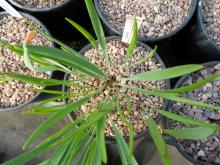
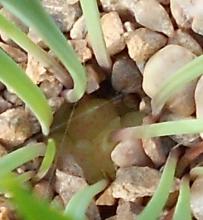
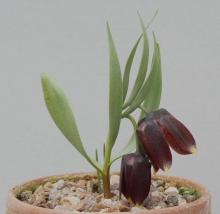
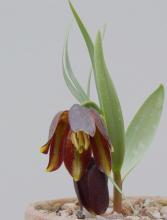
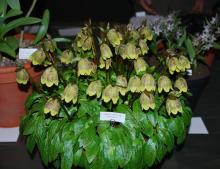
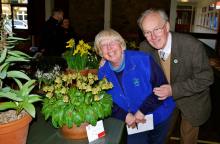

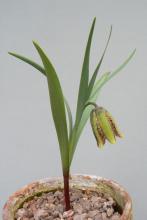
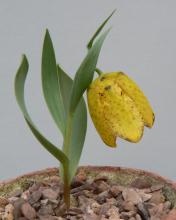

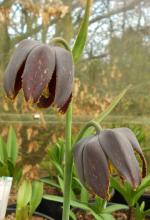
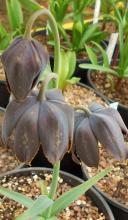
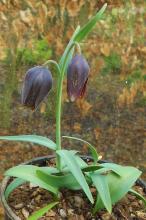
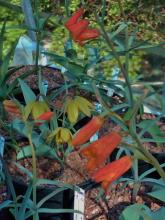
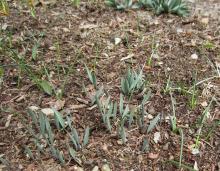
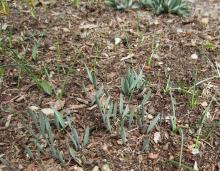
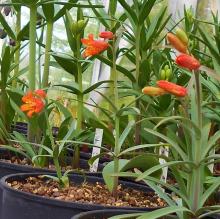
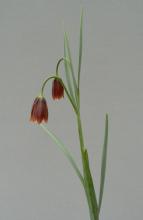
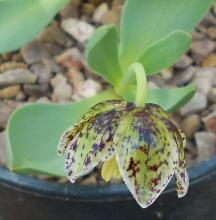
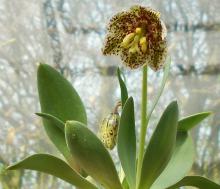
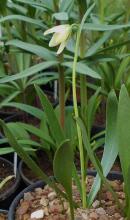
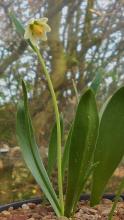
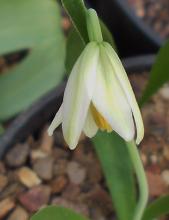
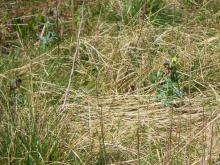
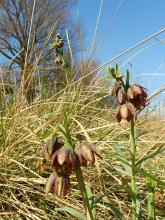

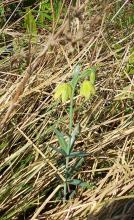
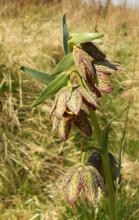
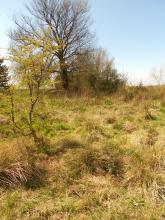
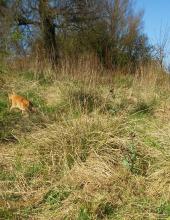
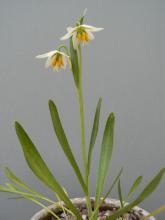
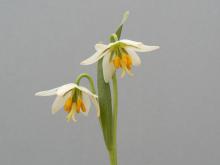
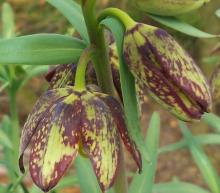
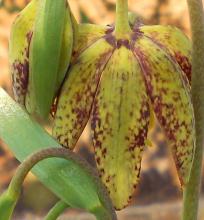
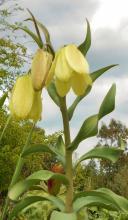
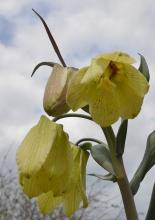
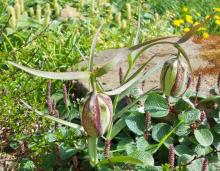
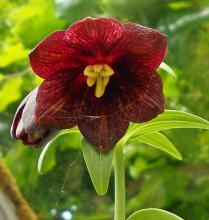
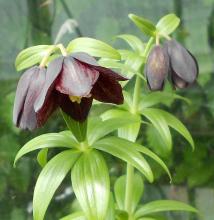
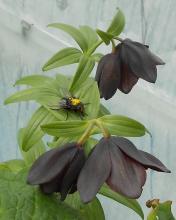
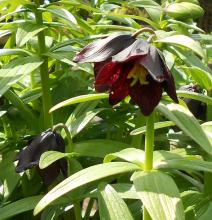
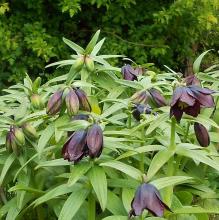
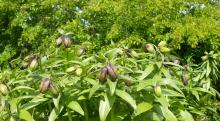
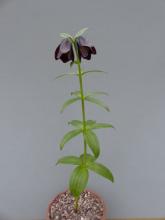
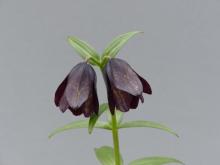
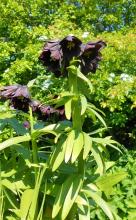
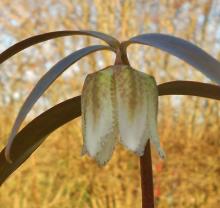

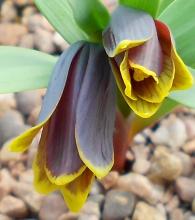

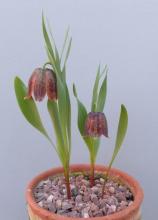
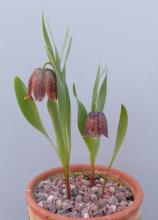
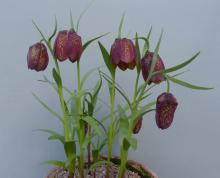
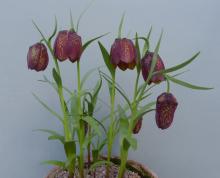
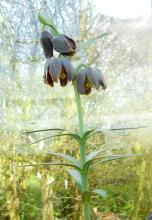

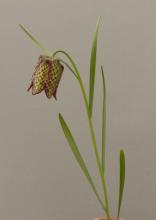
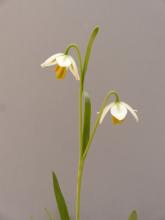
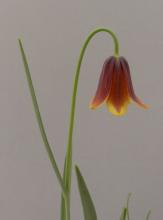
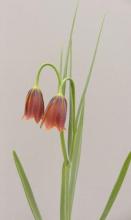
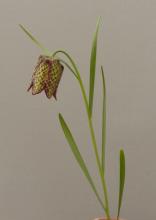
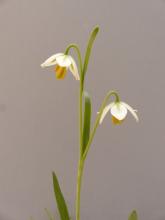
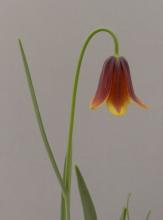
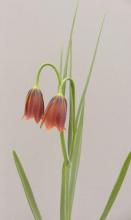
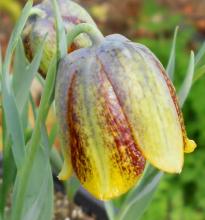
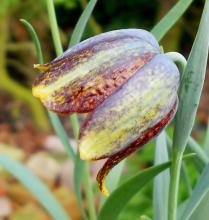
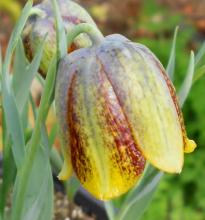
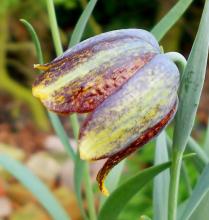
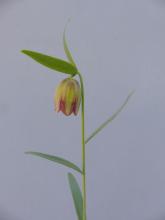
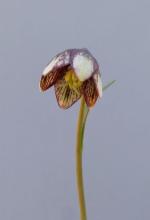
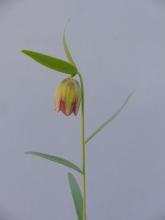
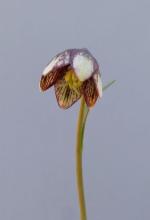
Very pretty Ron, I could get hooked!